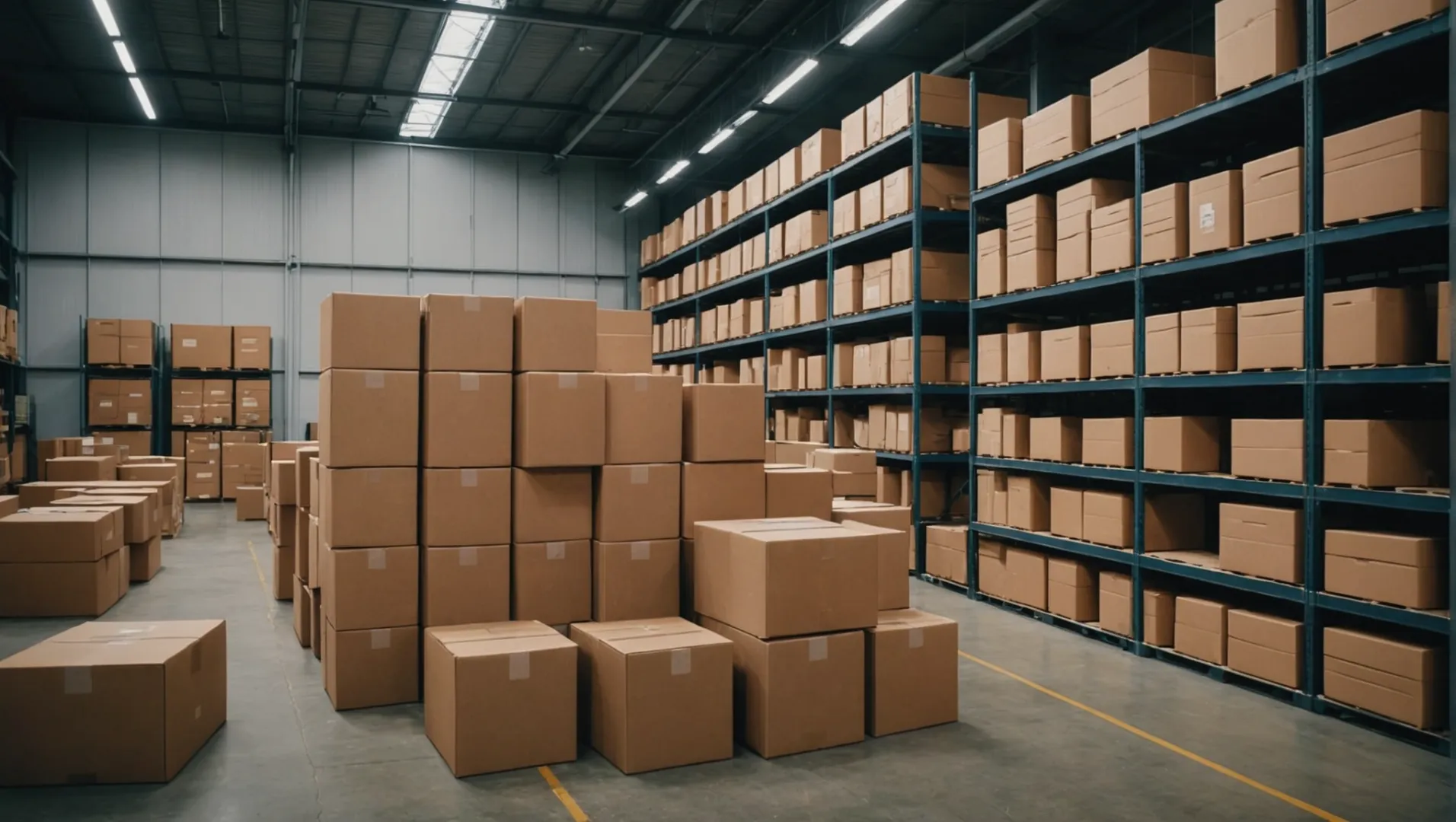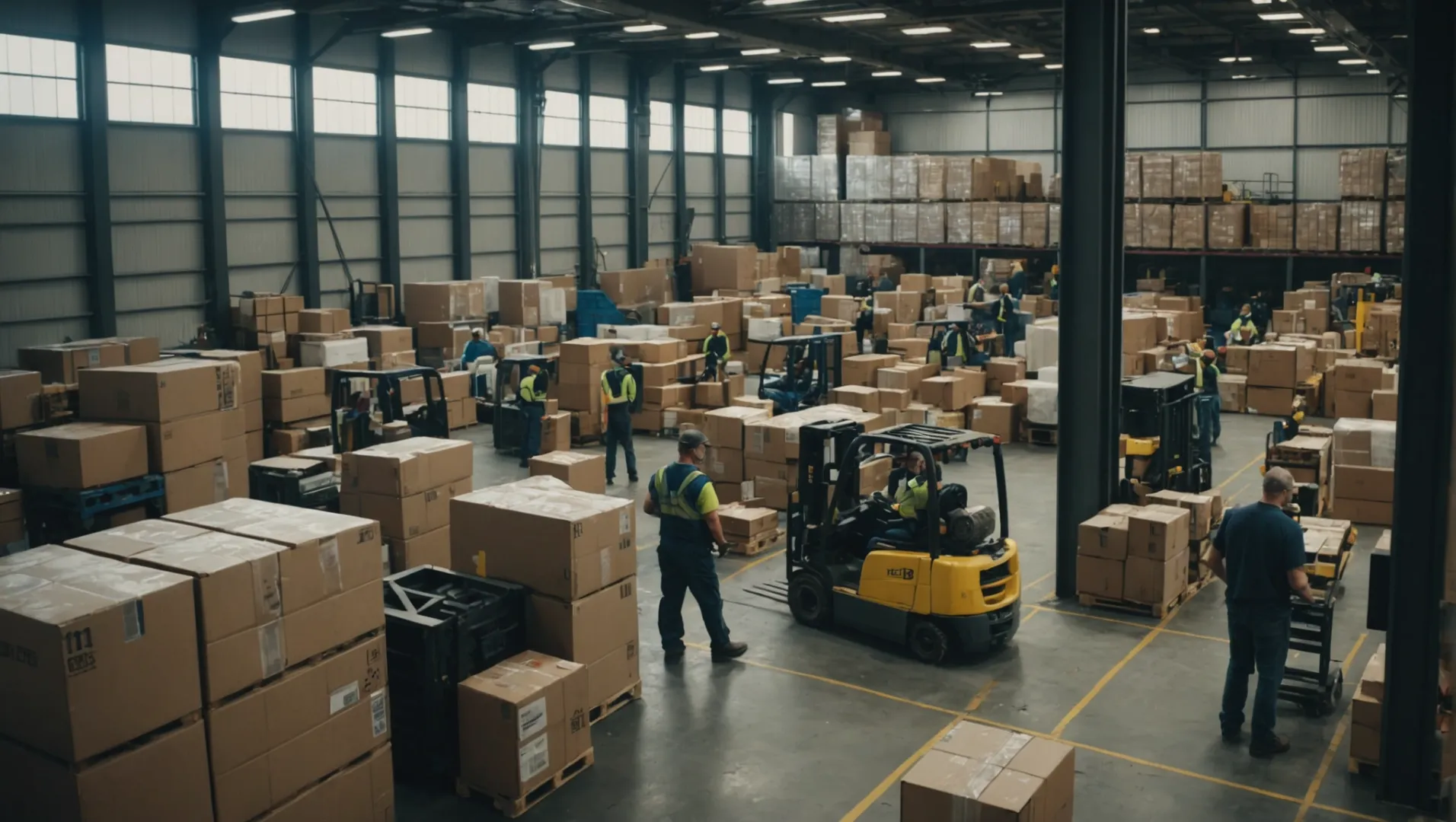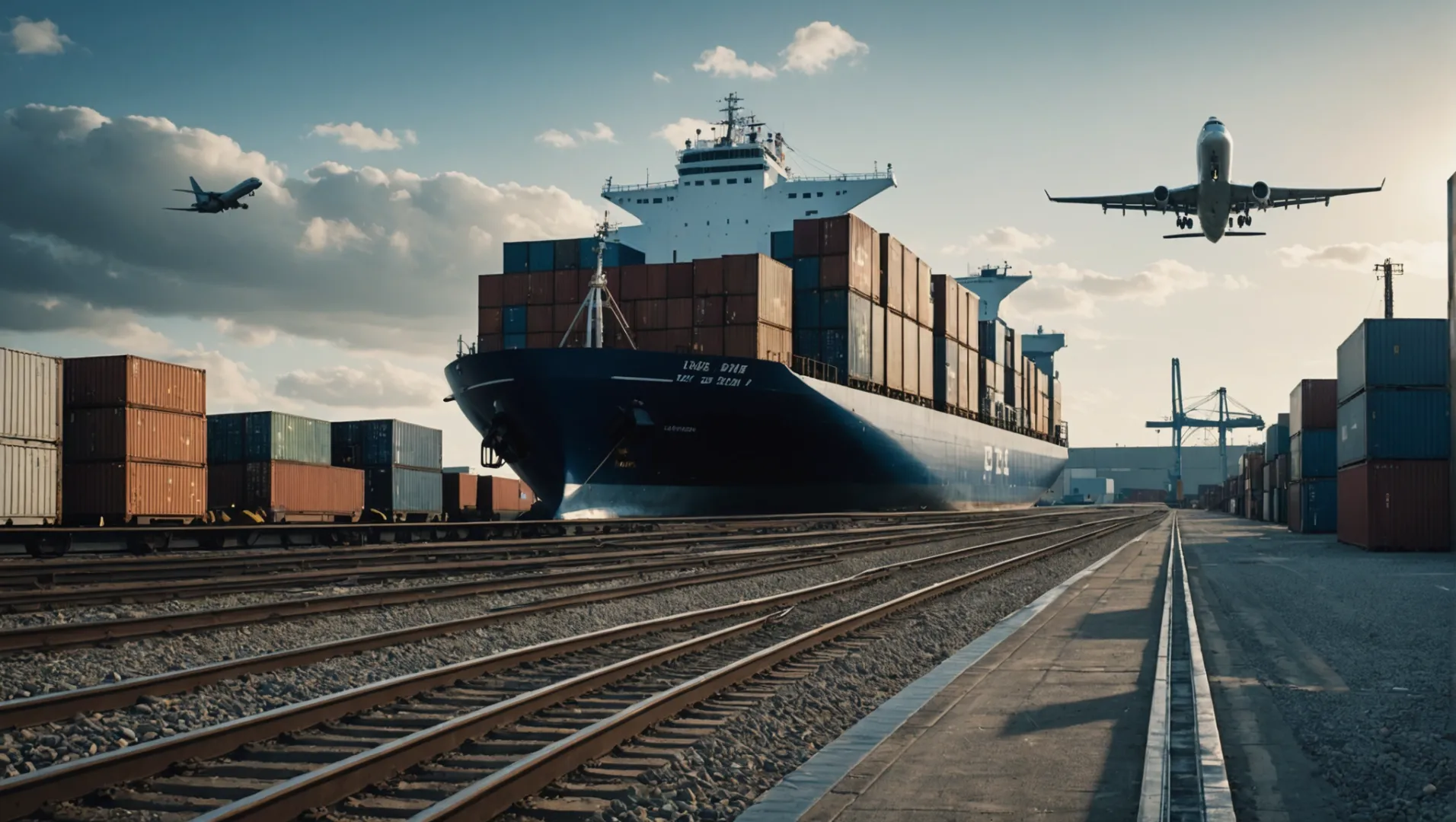Picture yourself running a busy company with products arriving from China. Expenses pile up fast!
To reduce shipping costs from China, focus on optimizing packaging, consolidating shipments, negotiating rates with multiple carriers, and exploring different shipping methods. These strategies can lead to substantial cost savings and improved efficiency in your supply chain.
These first ideas provide a base to lower expenses. Examining each approach closely uncovers more chances to save. Learn more to see detailed understanding and expert advice that might change your shipping steps.
Optimizing packaging reduces shipping costs from China.True
Small, light parcels lower size-related costs, helping save money.
How Can Packaging Optimization Lower Shipping Costs?
Find out how improving packaging might help lower your shipping costs and raise your supply chain performance.
Packaging optimization can lower shipping costs by reducing the package size, weight, and void fill. Efficiently designed packaging enables more products to be shipped in a single load, reducing overall shipping frequency and costs.

Simple Packaging Tips
Design Packages for Protection, Smaller Size, and Lighter Weight
Design packages for protection, smaller size, and lighter weight. This balance affects shipping prices because carriers charge by size and weight. Shrinking package size without risking product safety may greatly cut shipping costs.
Choose Materials and Innovate Designs
Picking the right materials impacts cost and planet health. Using lighter materials like corrugated cardboard or biodegradable options can lower weight and help the environment. Creative designs, like foldable or stackable packages, could use space well during transit.
Technology in Smart Packaging
Tech tools like CAD software help create perfect package shapes and sizes. AI and machine learning may study past shipments to suggest better designs and materials. Automated systems provide uniformity and less waste.
Successful Packaging Stories
Look at companies like Amazon that use smart packaging strategies. Their frustration-free packaging1 boosts customer happiness while cutting costs. These show real benefits of wise packaging choices.
To sum up, smart packaging needs a mix of new designs, good materials, and technology. Focusing on these helps businesses save a lot on shipping.
Reducing package size lowers shipping costs.True
Tinier packages decrease dimensional weight fees, cutting down expenses.
Heavier materials decrease shipping expenses.False
Using heavier materials leads to higher charges based on weight, raising expenses.
What Role Does Shipment Consolidation Play in Cost Reduction?
Putting shipments together probably changes the game by decreasing shipping expenses from China.
Shipment consolidation reduces costs by combining multiple small shipments into one larger, more efficient shipment, minimizing handling and transportation expenses.

Understanding Shipment Consolidation
Shipment consolidation involves combining several smaller shipments into a single, larger shipment. This method is particularly beneficial when dealing with numerous orders that are individually too small to fill an entire container.
Benefits of Consolidation
-
Cost Efficiency: By consolidating shipments, businesses can achieve economies of scale, which reduces the per-unit cost of shipping. This is because carriers often charge less per unit for larger shipments.
-
Reduced Handling Fees: Fewer shipments mean fewer occasions for handling fees, such as loading and unloading costs, leading to direct savings.
-
Improved Shipping Rates: Larger shipments may qualify for bulk discounts or better rates from freight forwarders.
Real-World Applications
Consider a company importing electronics from China. Individually, the orders may only fill half a container. By consolidating shipments, they can fill an entire container, thereby saving on shipping rates and reducing the environmental impact.
How to Implement Shipment Consolidation
-
Analyze Order Patterns: Identify common destinations and frequencies for your shipments. Group orders going to similar locations.
-
Collaborate with Partners: Partner with other businesses importing from the same region to share container space.
-
Use Technology: Employ logistics software to track orders and optimize consolidation processes.
-
Work with a Freight Forwarder: A freight forwarder2 can assist in identifying consolidation opportunities and negotiating better rates with carriers.
Considerations and Challenges
While shipment consolidation offers numerous benefits, it may also present challenges such as:
- Longer Lead Times: Waiting for enough orders to consolidate might delay shipment schedules.
- Complex Coordination: Managing multiple orders within a single shipment requires careful planning and coordination.
Despite these challenges, the cost savings and efficiency improvements make consolidation a worthy consideration for any business looking to reduce shipping costs.
Shipment consolidation reduces per-unit shipping costs.True
Combining things saves money, reducing costs for each item.
Consolidating shipments increases handling fees.False
It decreases handling occasions, thus reducing handling fees.
How to Negotiate Better Rates with Freight Forwarders?
Talking with freight forwarders about better rates might greatly lower shipping costs and improve profits.
To negotiate better rates with freight forwarders, research market rates, leverage volume discounts, maintain a strong relationship, and explore flexible terms. Engaging multiple forwarders can also create competitive pricing opportunities.

Using Knowing Market Prices
Checking the current market prices for the shipping routes you want to use is necessary before talking about costs. Knowing these standards helps you set fair goals and see if the prices your shipping partner offers are fair.
Using Volume Reductions
If your company ships big quantities often, use this to discuss lower costs. Shipping partners usually give discounts for large volumes to keep regular work. Share your shipping plans and ask about different pricing options that could help both sides.
Creating Strong Connections
Creating a good connection with your shipping partner can lead to better deals. Regular talks, paying on time, and being dependable form trust. This connection might later give you better deals or extra services at no extra cost.
Searching for Flexible Terms
Think about asking for flexible terms that might change based on market movements or how things go. These could involve changes to fuel charges or savings for delivering on time. Being willing to explore new ideas might uncover hidden savings.
Connecting with Multiple Partners
Never hesitate to connect with different shipping partners. Asking for offers from several companies creates competition and might offer better deals. Make a list comparing these offers based on price, included services, and extra charges:
| Forwarder | Base Price | Services Included | Extra Charges |
|---|---|---|---|
| Forwarder A | $X | Tracking, Customs Clearance | $Y for Handling |
| Forwarder B | $X | Insurance, Tracking | $Z for Storage |
| Forwarder C | $X | Customs Clearance | $W for Fast Delivery |
Each company's offer might differ in what's included or not, providing more points to discuss.
Market research is crucial for rate negotiations.True
Learning about market prices helps establish realistic goals and standards.
Engaging one forwarder ensures the best rates.False
Multiple forwarders bring competition. This probably reduces prices.
Are There Alternative Shipping Methods Worth Exploring?
Discovering different shipping strategies may reveal hidden savings and improved efficiency in your supply network.
Yes, there are alternative shipping methods worth exploring, such as rail transport, less-than-container load (LCL) shipping, and ePacket services. These options can offer cost savings and improved delivery times depending on your specific needs and shipping volume.

Using Rail Transport: A Cost-Saving Choice
Rail transport grows in popularity as another option for sending goods from China, besides air and sea shipping. It provides a balance in price and speed. Though slower than air, rail is much cheaper and more dependable than sea, especially when demand is high. It also helps the environment with lower carbon emissions.
Learn more about the advantages of rail transport3
Shared-Container Shipping
Sharing container space through LCL shipping saves money for businesses not needing a full container. This choice lowers expenses for small shipments that do not need full space. Think about timing and how much you send when choosing LCL.
Discover how LCL shipping can benefit your business4
Using ePacket for Small Packages
For smaller packages, ePacket offers an affordable and quick solution. Created by China and the US postal services, ePacket speeds up delivery for light packages at low costs. It mainly helps eCommerce businesses selling to US customers, but now it is used elsewhere too.
Explore the benefits of using ePacket services5
Local Warehouses: A Smart Decision
Building local warehouses near main markets cuts down shipping costs and delivery time a lot. By keeping products close to buyers, companies use local courier services for final delivery, reducing international shipping costs and providing faster service.
Understand how regional warehousing impacts your logistics6
Rail transport is cheaper than air freight.True
Train transport provides a cheaper option than planes for moving goods.
Regional warehousing increases shipping costs.False
Warehouses in the area lower expenses by decreasing shipping across countries.
Conclusion
Examine your current methods and utilize these suggestions for lasting success in cutting expenses and increasing productivity.
-
Explore how Amazon's strategy reduces costs and improves satisfaction.: Frustration Free Packaging programs are designed for e-commerce shipping. It protects the product but the packaging design is easy to open. ↩
-
Freight forwarders streamline logistics, optimizing shipment consolidation strategies.: Freight consolidation, like co-warehousing, allows merchants to consolidate their inventory with other merchants' to reduce supply chain costs and preserve ... ↩
-
Explore how rail transport balances cost and speed effectively.: Rail goods trains are a very efficient way of shipping from China to Europe, they are cheaper than air freight and take much less time to travel ... ↩
-
Find out how LCL shipping optimizes costs for small shipments.: LCL denotes freight from different shippers that are consolidated and moved in one container. The idea is to have a shipper share the cost of the container ... ↩
-
Discover how ePacket speeds up and reduces costs for small parcels.: ePacket is a shipping service for packages sent from China and Hong Kong to more than 40 countries. It's designed to reduce delivery times and costs. ↩
-
Learn how regional warehousing enhances logistics efficiency.: Parcel shippers use warehouses to satisfy customers and keep costs low. A warehouse network is two or more distribution centers that have a ... ↩




